Mi Viaje A La Habana I My Trip to Havana
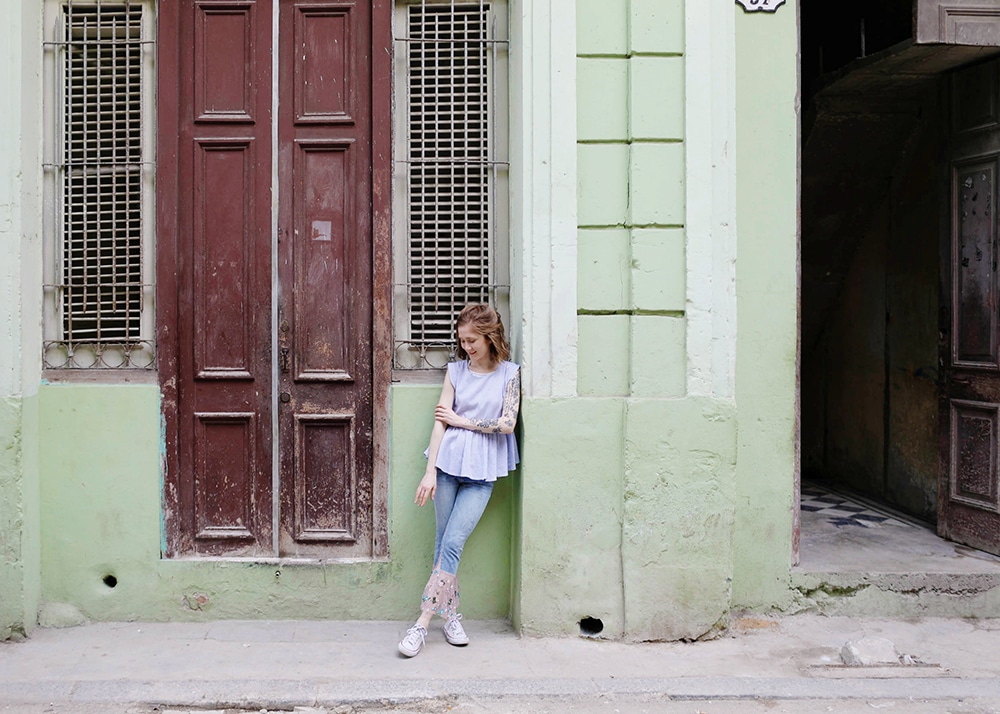 Since being the in “real world” (read: not in school), I’ve taken a “true” vacation once. When I went to Paris in July 2015. Spending a week in a foreign country and taking in the sites and sounds of a different culture was an incredible experience. Whether visiting a third world country or Buckingham Palace, being thrown into a new environment is invigorating. I didn’t understand the adage “travel often” until I did. I came back with a renewed appreciation for what I have and don’t have. A joie de vivre you could say.
Since being the in “real world” (read: not in school), I’ve taken a “true” vacation once. When I went to Paris in July 2015. Spending a week in a foreign country and taking in the sites and sounds of a different culture was an incredible experience. Whether visiting a third world country or Buckingham Palace, being thrown into a new environment is invigorating. I didn’t understand the adage “travel often” until I did. I came back with a renewed appreciation for what I have and don’t have. A joie de vivre you could say.
Last week marked the second time I have taken a “true” vacation. The destination? Havana, Cuba. Duration? Six days. I was excited about traveling to Havana, or Habana as the people on the island call it, but there was lot of uncertainty. Until recently, Americans haven’t been able to go, so getting the proper information was tricky. Where do I get a visa? Will I be able to access WiFi in the even that something happens? Is it okay to drink the water? My boyfriend and I researched, but took the route of “we’ll figure it out.” We figured out most of it peachy – we drank Ron Collins at the Hotel National, we ate pork sandwiches and cake off the streets, we visited the studio of a local artist and the only art college on the island, we traversed the valley of Vinales, and we took a boat ride through the Indian Cave. Hell, I even threw up in a random person’s house next to a rum factory (I suddenly came down with a stomach bug). Although we had an AWESOME time, there was a lot of things that we wished we figured out prior. Like the fact that markets don’t really exist, so getting snacks or basics like milk is nearly impossible. Since more Americans continue to go, and many of my friends have said they wish to go, I thought I’d contribute to the international travel blogosphere with my knew knowledge while telling you about the spots we hit up and recommend. Please take the following with a grain of salt – I’m no travel expert and most of the below is what we learned from locals, other tourists and on forums from the web.
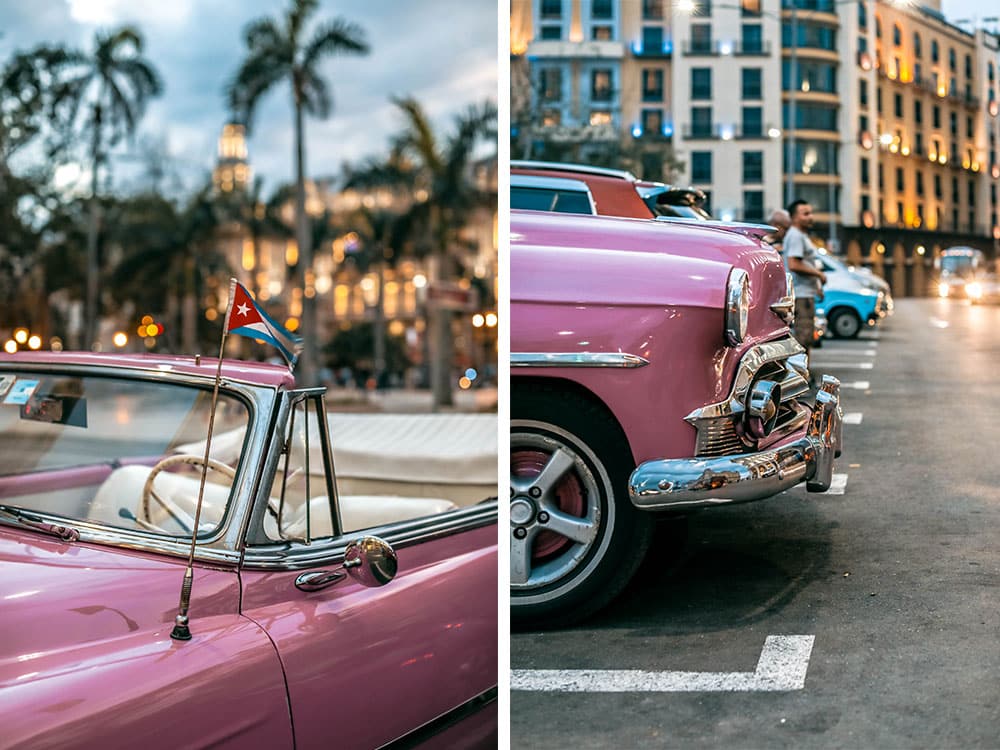
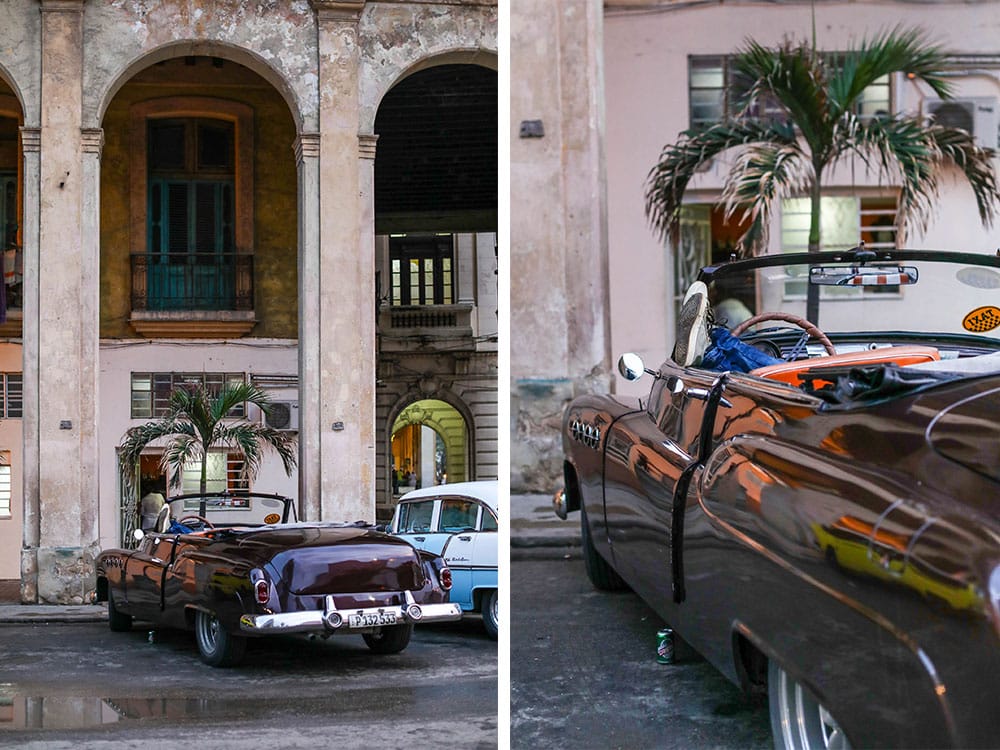
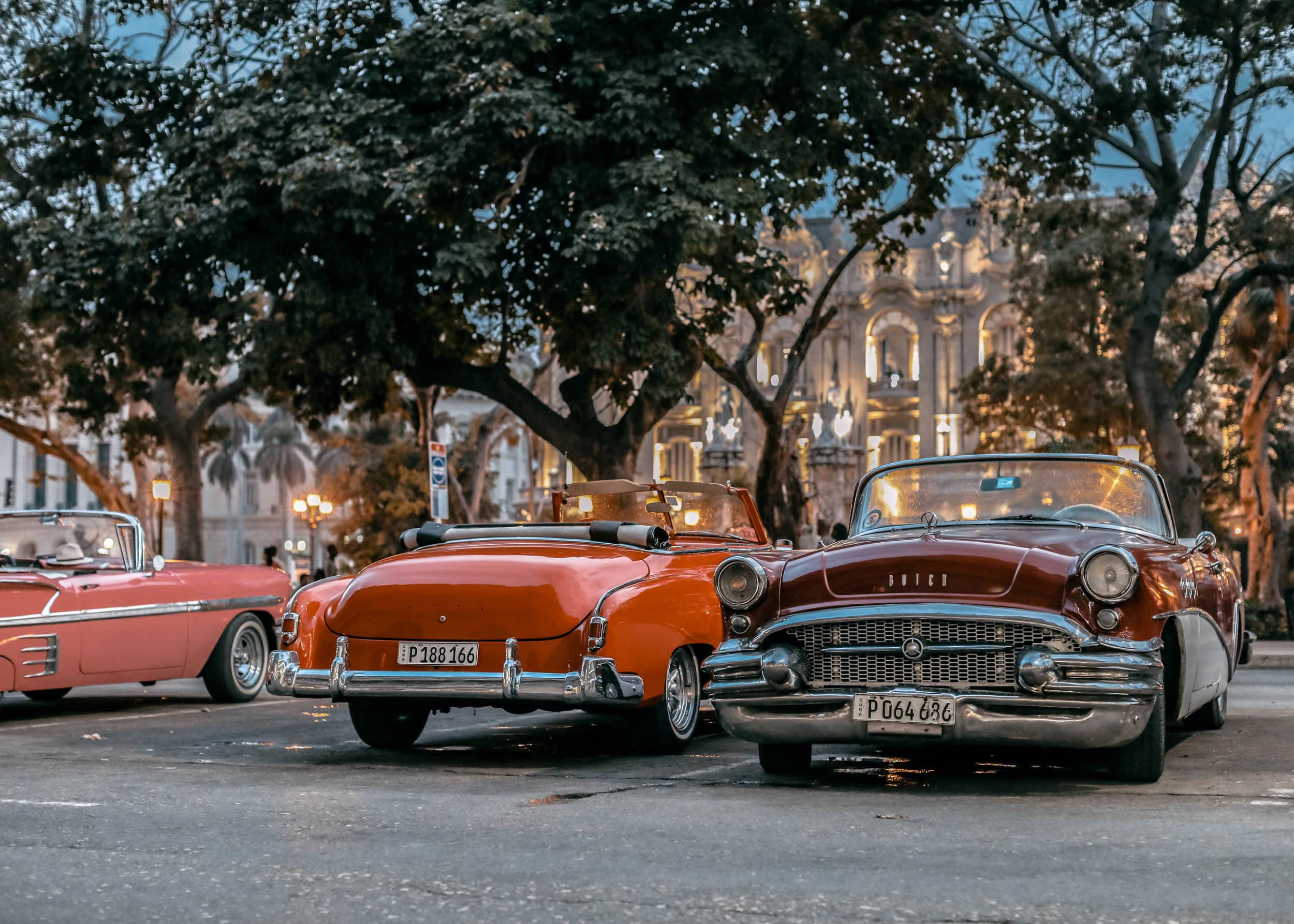
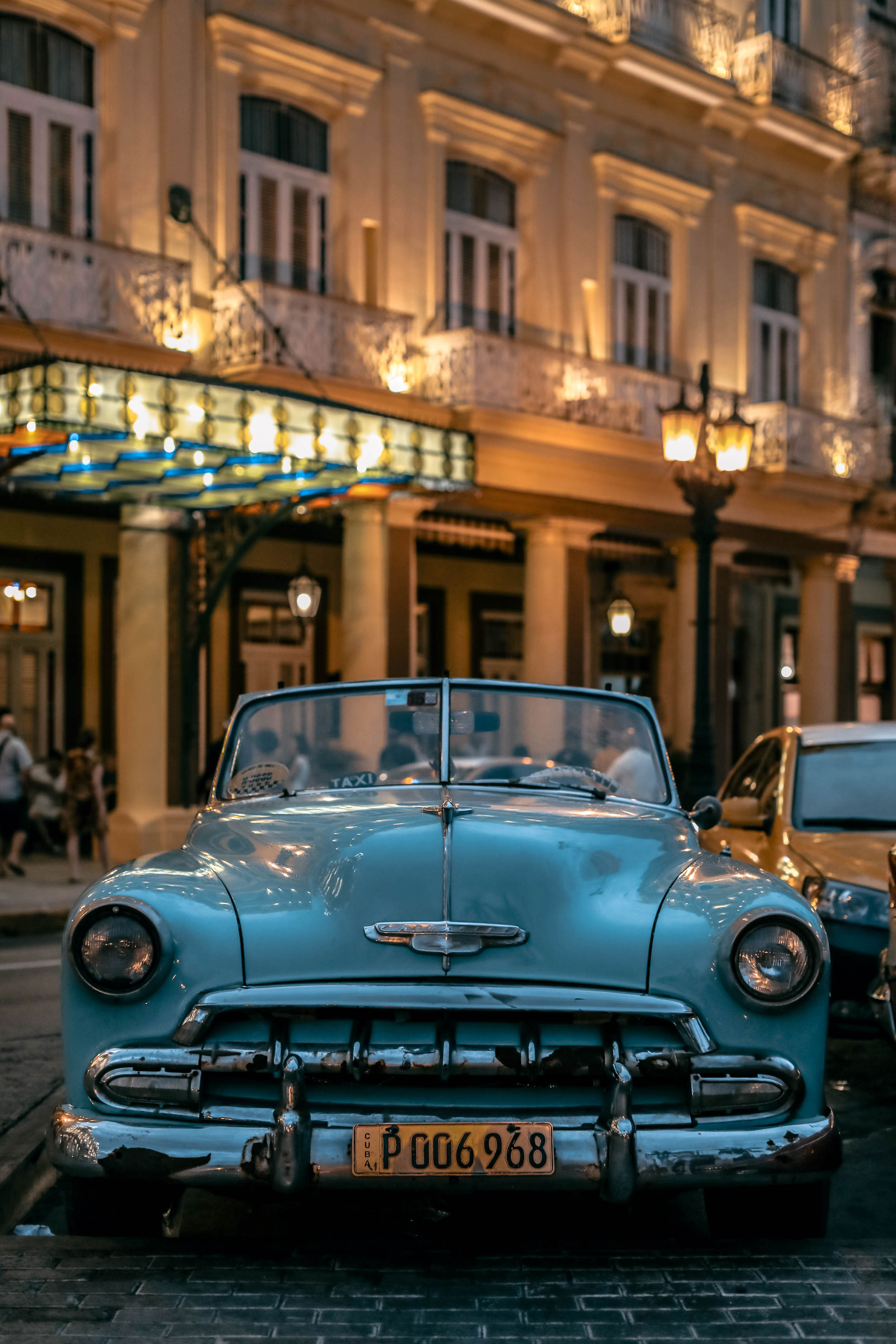
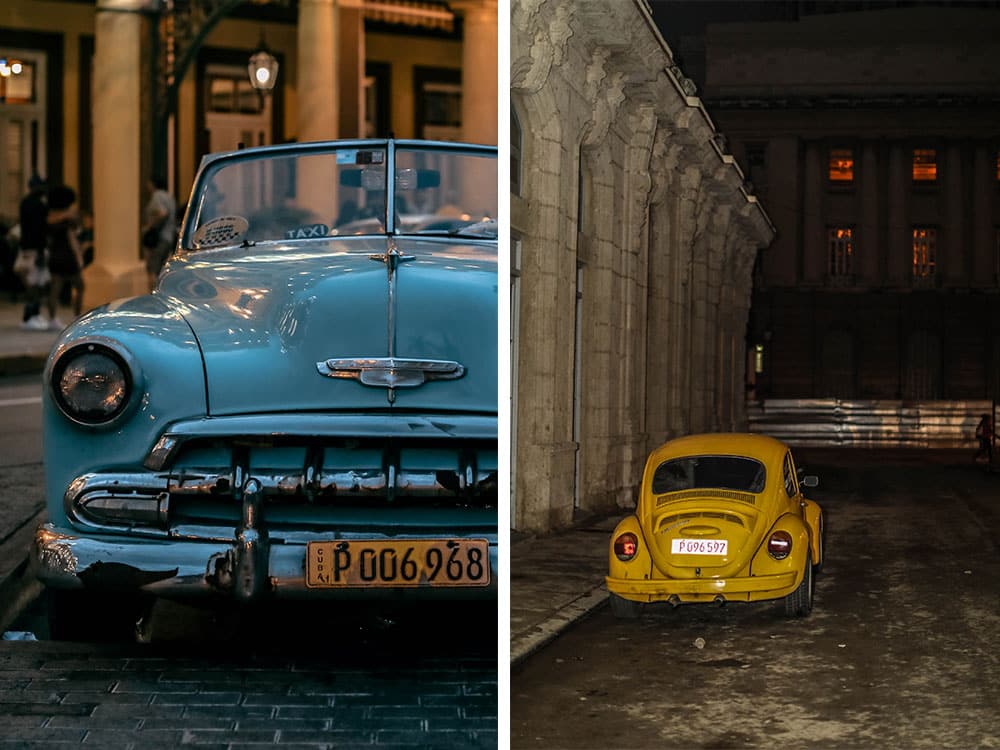
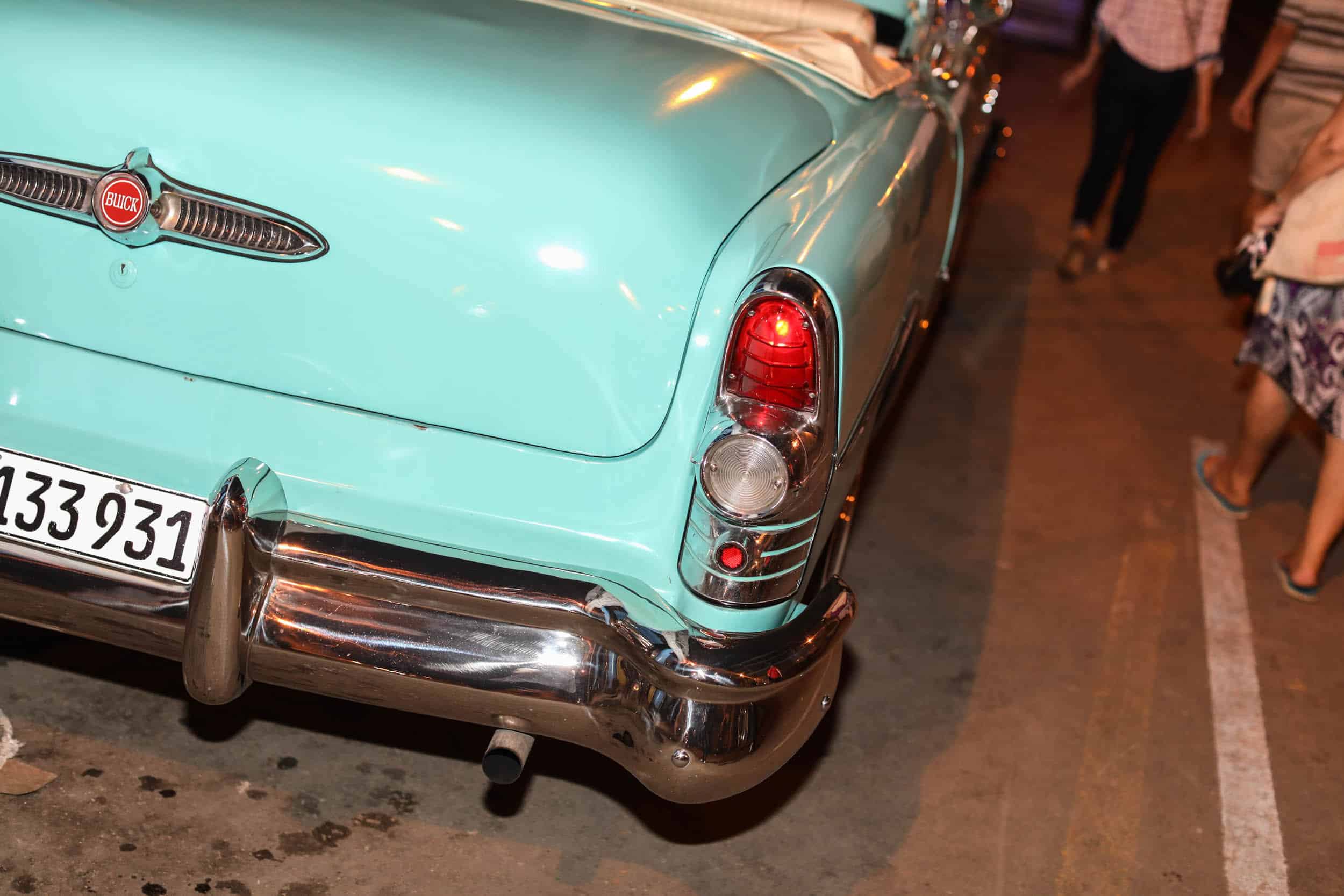 BOOKING A FLIGHT TO CUBA – CAN AMERICANS STILL GO?
BOOKING A FLIGHT TO CUBA – CAN AMERICANS STILL GO?
Despite the new restrictions that were implemented last November, Americans can still go. We booked our flight before the changes, and thought we would be one of the last Americans to be able to travel there. However, on the last night, we learned from another American that it’s still relatively easy to get to the island.
Before and after November, any American has to claim one of the following twelve as a reason for visiting:
- Family visits
- Official business of the U.S. government
- Journalistic activity
- Professional research and professional meetings
- Educational activities
- Religious activities
- Public performances, clinics, workshops, athletic and other competitions, and exhibitions
- Support for the Cuban people
- Humanitarian projects
- Activities of private foundations or research or educational institutes
- Exportation, importation, or transmission of information or informational materials
- Certain authorized export transactions
We chose journalistic activity, since I do freelance photography, but the person we met said that you can choose ‘support for the Cuban people’ as long as you stay at an AirBnB and don’t shop at any major stores. Just to note – other than when booking our flight, and when we got a visa, no one asked why we were visiting.
WHAT AIRLINES FLY TO CUBA?
Not too long ago, Americans who wanted to go to Cuba would have to fly to Cancun first. Supposedly, Cuba didn’t stamp US passports, so when Americans returned, it seemed like they only went to Mexico. Well, Cubans are stamping passports now, and JetBlue and Southwest have direct flights. We booked our flight through Southwest and got a pretty good deal round trip ($350 each). We had a layover in Ft. Lauderdale.
WHERE DO I GET A VISA?
You will need to get a visa in order to enter Cuba and at first, it seems like it’ll be a hassle, but it isn’t. We purchased it at the Fort Lauderdale airport at our gate. They took payment, gave us the visa and we filled out both sides. Be sure to not make any mistakes because getting a new one costs another $50. Also, keep the visa for your return flight. We thought we’d only need it getting into Cuba, but they asked us for it when we were coming back. All in all, really easy
OTHER THAN A VISA, WHAT OTHER DOCUMENTS DO I NEED?
None to my knowledge. All the documentation I had was my ID, my passport, my visa and my boarding passes. That’s it. I didn’t need any proof that I was a ‘journalist’.
EXCHANGING MONEY, CUBAN CURRENCIES AND CREDIT CARDS
First, American credit cards don’t work in Cuba, so you need to bring cash and exchange it before or at the Cuba airport (you can’t do it before).
There are two types of currency in Cuba: the CUC and the CUP. The CUC is the major legal currency and the most widely used. You’ll receive CUC when you exchange your USDs. As of the date of this posting, 1 CUC = 1 US dollar. The CUP is the other form of currency and what is given to the people by the government (since they are a socialist country). Even though the CUP is legal, most use CUP. With that said, many inexpensive street vendors, taxis, and food joints, will have prices in CUP or will give you back change in CUP, so be careful because you might not be able to use it elsewhere. At the time of this posting, .24 CUP = 1 CUC.
Even though the exchange rate between CUC and USD is 1 to 1, there’s a 10% penalty charged if you exchange US dollars into CUC. You can avoid this by exchanging USD into Euros or Canadian dollars before leaving. Once you arrive in Cuba, you can exchange into CUC. Also, be sure to exchange your CUC for USD before you get back to the United States. We took an early flight out, and the currency exchange booth wasn’t open. When we arrived at Ft. Lauderdale and tried to switch back, we were told that the money was no good. I called my bank and luckily, found out that Bank of America will convert.

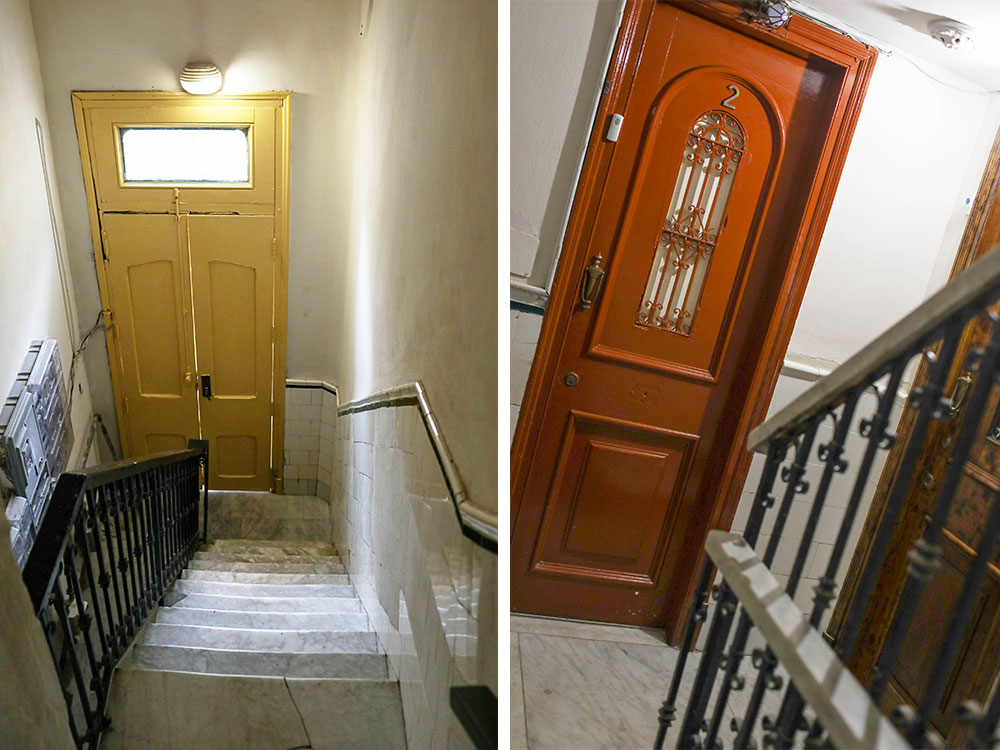
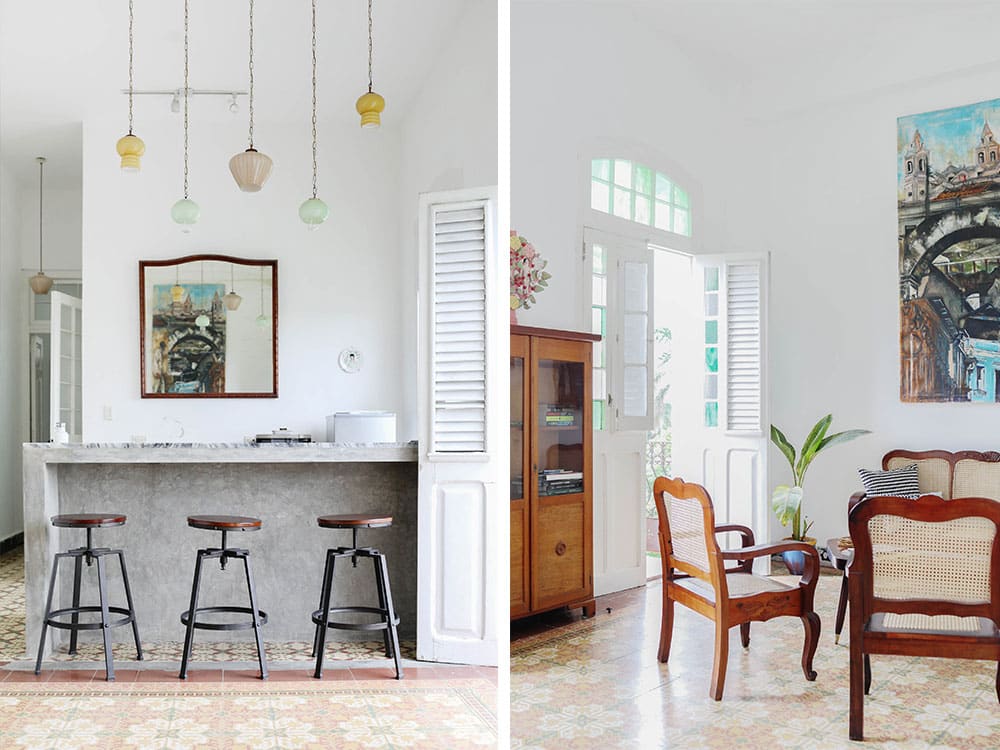
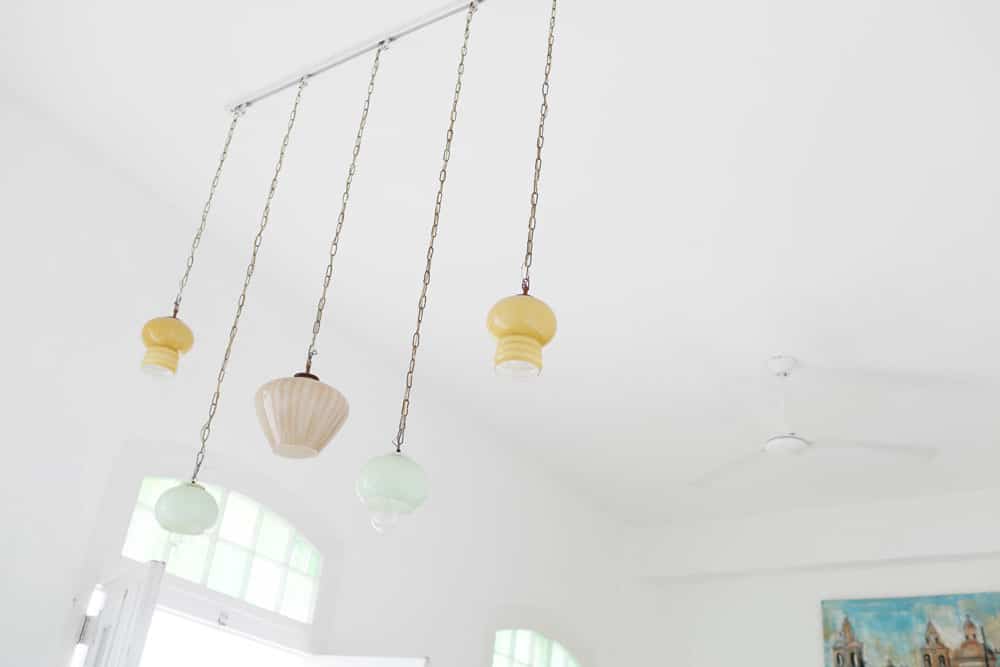

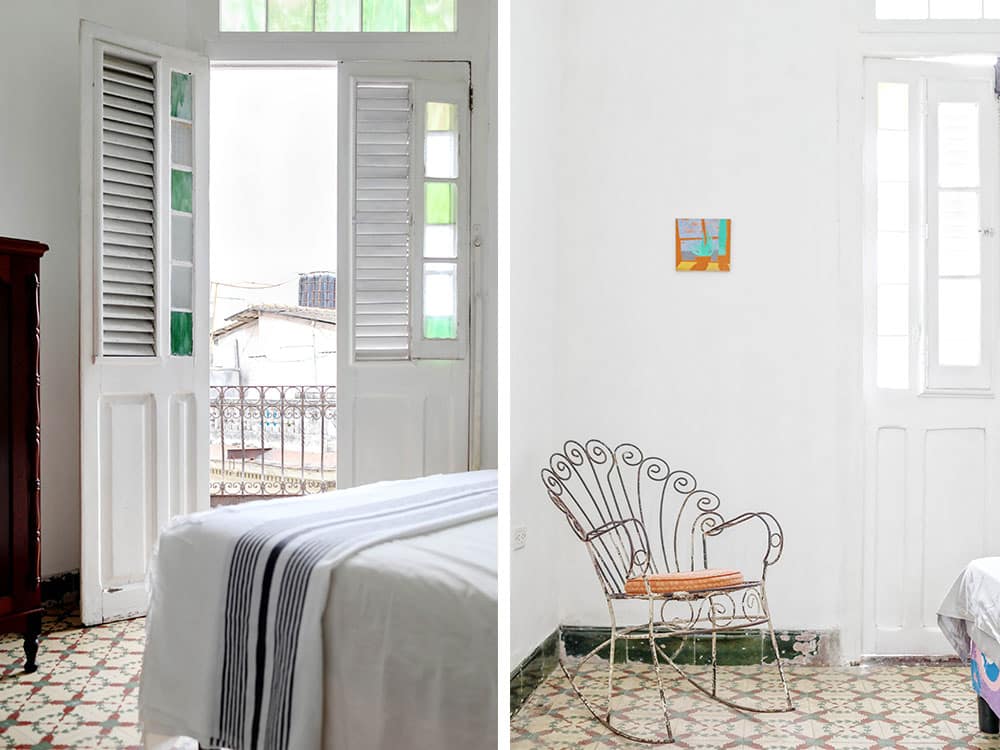
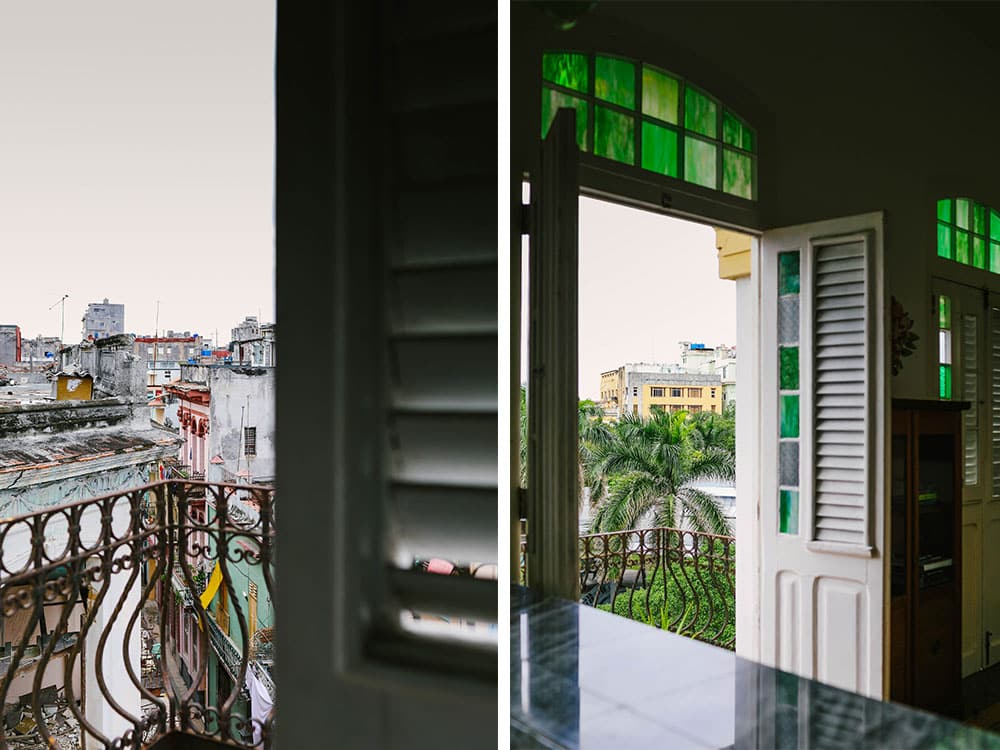
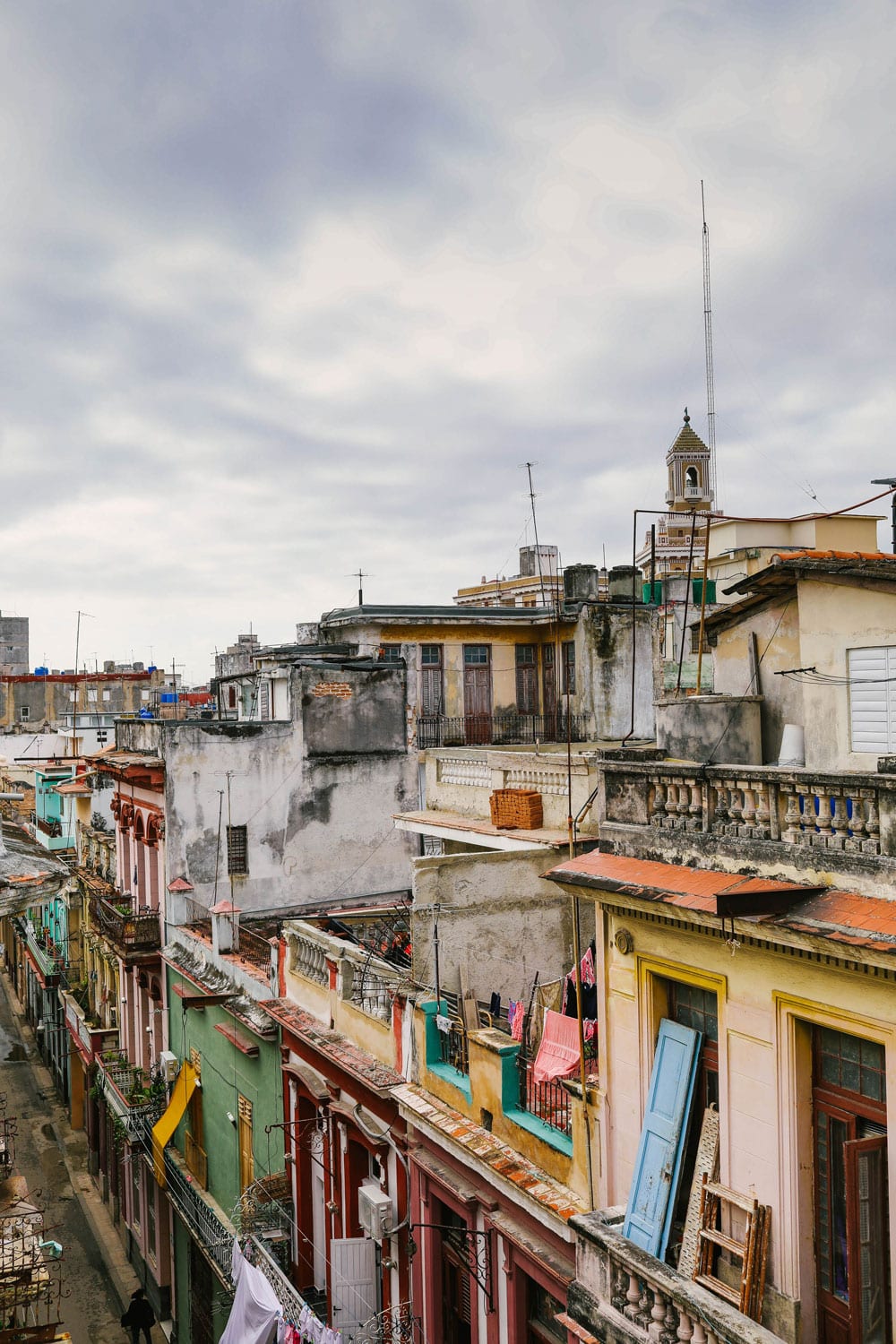
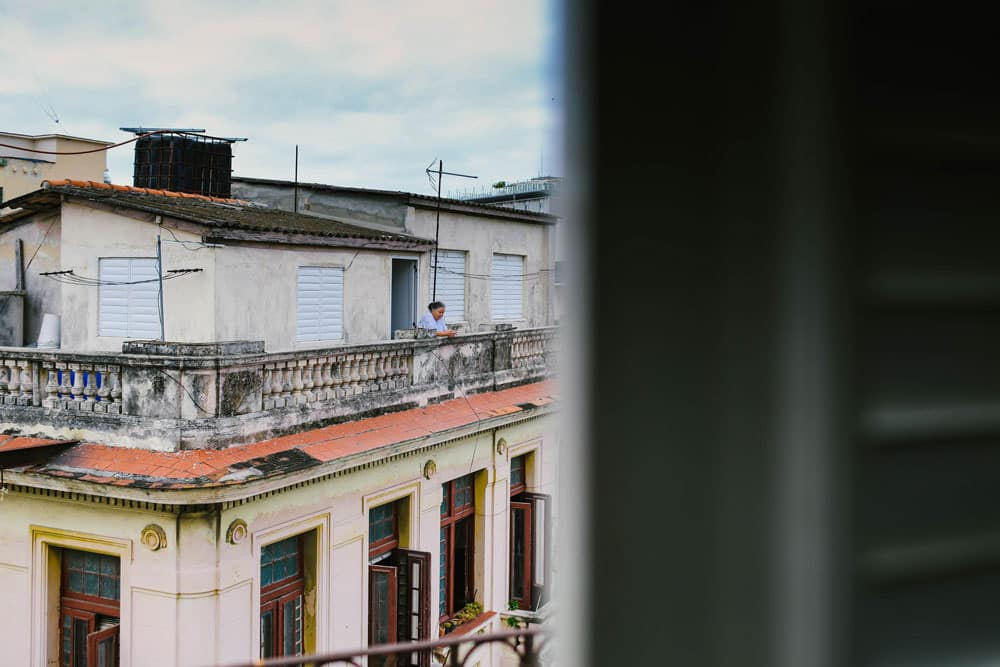 WHERE WE STAYED
WHERE WE STAYED
We stayed in this AirBnB in the heart of Old Havana and had a great experience. Alessandro and Valentina were wonderful hosts and it was a charming ‘casa particular.’ Valentina checked on us every day to make sure we were having a good time and if we needed anything. She arranged for a taxi to and from the airport (and met us when we arrived), she helped us find and book reservations at restaurants, coordinated a tour to a local artist’s studio and the school where she taught, and even provided ibuprofen when I got a stomach bug one day. There are a ton of AirBnBs in the area and many Americans we met were staying in one as well. We were never worried about safety. If hotels are more your thing however, I suggest the Hotel Sevilla. It was right down the street, and where we booked our tour to Vinales and accessed WiFi (2 CUC per hour). Some other hotels we walked by, but didn’t go into, were Hotel Saratoga, Hotel Santa Isabel, Hotel Florida just to name a few.
PLACES TO GO
Calle Obispo – This is like the Times Square of Havana. Always busy; always hustling and bustling. There are art galleries, cafes, old school pharmacies, hotels, book stores (government run – everything’s in Spanish), souvenir shops (cheesy and cheap, but worth a look), and food joints (pork sandwiches!), bakeries (cake!) all along the street, which runs from La Floridita to Plaza de Armas. There are A LOT of tourists, but also a lot of locals as they are going to a bodega for their rations.
La Plaza Vieja– The most beautiful old square in the city, IMHO. Ironically, it’s not the oldest plaza in the city. Located near the cruise ships, it’s VERY touristy. It is surrounded by cafes and restaurants, one of which is a micro brewery (listed below). There’s also a lot of bands/music playing and a good spot to hit up at night.
Cámara Oscura – Located in Plaza Vieja, it’s a hidden gem. It’s only 3 CUC price and will take 20 minutes of your time. The guide, who gives the presentation in both Spanish and English, first gives an overview of the simple camera and how it works. She’s informative and witty, and it’s interesting to see the city through this lens.
Vinales– Initially, we didn’t want to go Vinales. We thought we’d have enough to do in the city and didn’t want to make the 2.5 hour trek. However, after exploring the entire city by day 2, we knew we needed to do something to fill the remaining 3 days of our trip. Aside from the fact that I came down with a stomach bug at the beginning of the day, it was by far the best experience. Put it this way – I was throwing up and still went on the boat ride through the Indian Cave. The sites and landscapes were that amazing.
We booked the tour through the travel office at Hotel Sevilla. It was 75 CUC per person. Considering a ticket to La Tropicana was 95 CUC and didn’t include dinner, and that this tour was more than 10 hours long and included lunch and transportation, we thought it was a great price. We first toured a rum factory, then headed to see the Vinales valley, which truly was breathtaking. After, we enjoyed a lunch of pork, rice and beans, salad and a pudding dessert. Well, not me, I was still sick at this point. After was a stop at a tobacco farm and last, was a boat ride through the Indian Cave. My stomach was feeling okay at this point, so I took the risk to get on a boat and I’m so glad I did. So cool!
Veradero – We didn’t go here as it is “winter” and was a little to chilly to visit a beach (in the 60s). It isn’t the closest beach to Havana – Playa de Este is – but from what I’ve heard, it’s better. Touristy, yes, but better.
Real Fabrica de Tabacos Partagás– A cigar factory, museum and store. The famous habanos cigars are produced in this factory, and it is across the street from the Capitol building.
Fabrica de Arte Cubano – Unfortunately, we weren’t able to go here either. It was closed until the day we left. I heard that it’s fantastic though. Housed in a former cooking oil factory, it was renovated into a super neat and unique venue with art galleries, nightclub, bars and restaurant.
Fusterlandia– Where Cuban artist José Fuster transformed his home neighborhood into an intricate display of tilework and kaleidoscopic colors. A street-art extravaganza that is like street art on steroids.
Some other places to suggest – University of Havana, Plaza de la Revolucion, Church and Convent of St. Francis of Asisi, Plaza de Armas, National Museum of Fine Arts, El Malecon, Plaza de la Catedral
HOW TO GET AROUND
We walked about 90% of the trip. Havana is a relatively small city so as long as you’re staying in the Old Havana area, you should be able to walk to most places. If you get a taxi, be sure to set the price with your driver before, not after. You’ll probably pay anywhere between 10-20 CUC per trip, which is rather expensive considering I usually pay $5 for an Uber.
Because you won’t have access to internet or WiFi when walking around, use maps that work online, which you can find here.
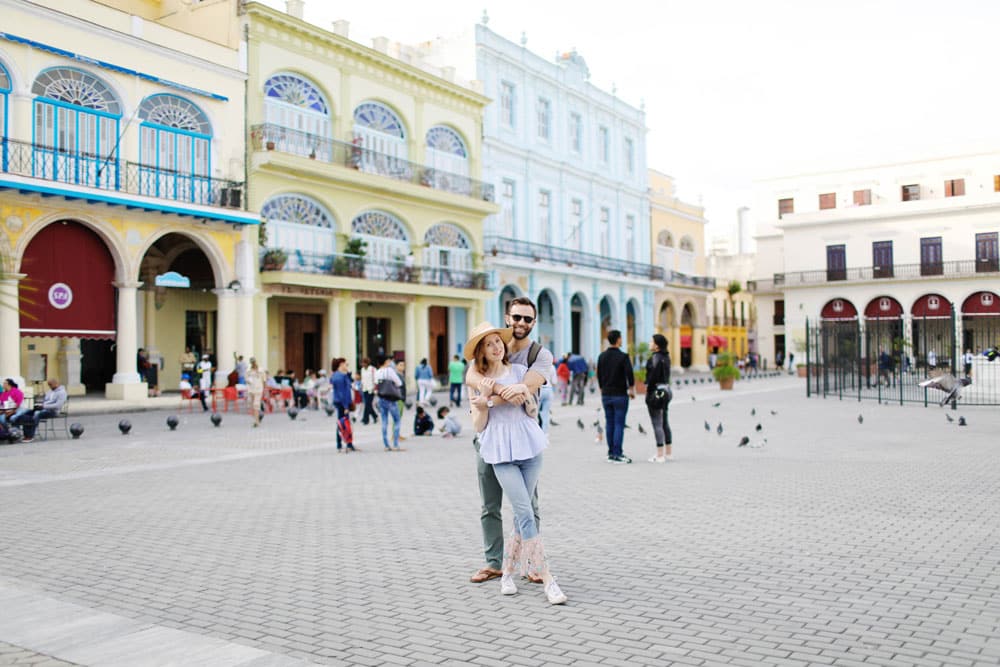
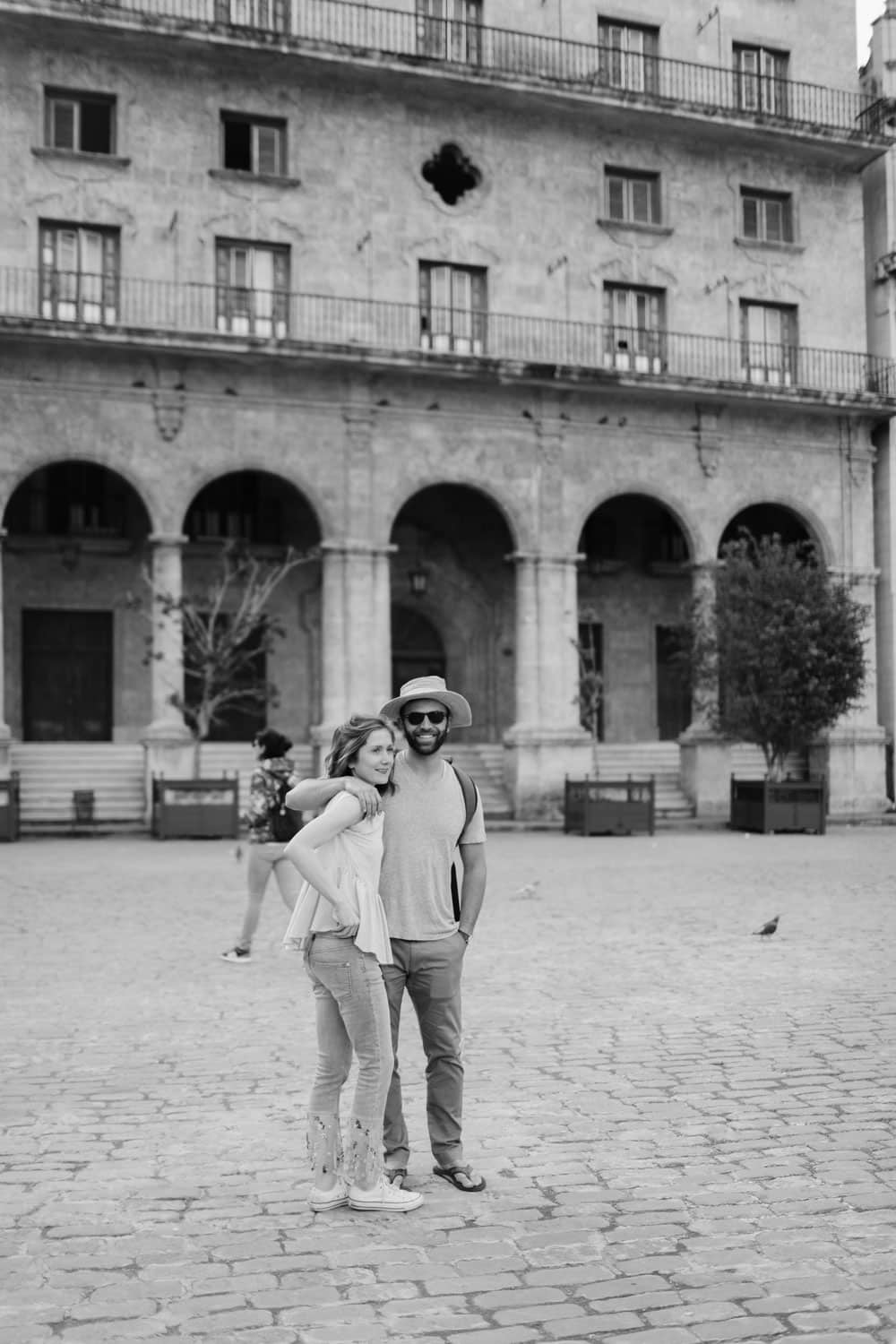
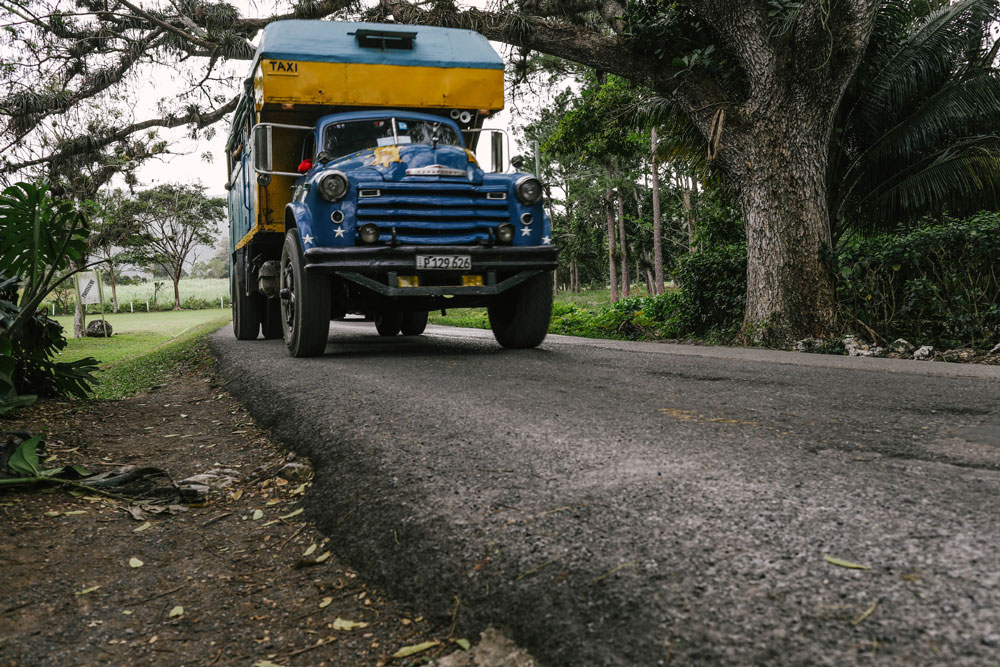
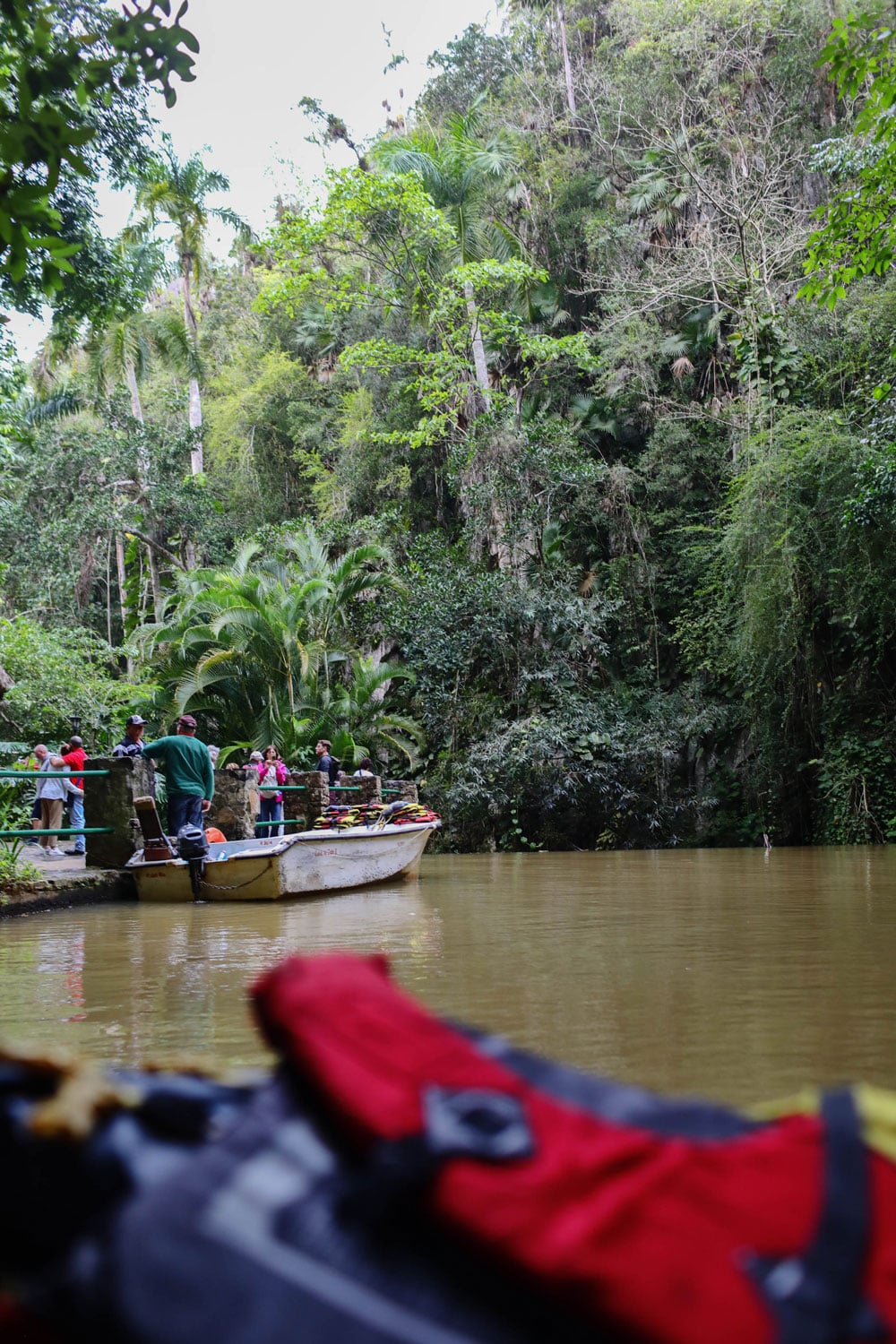
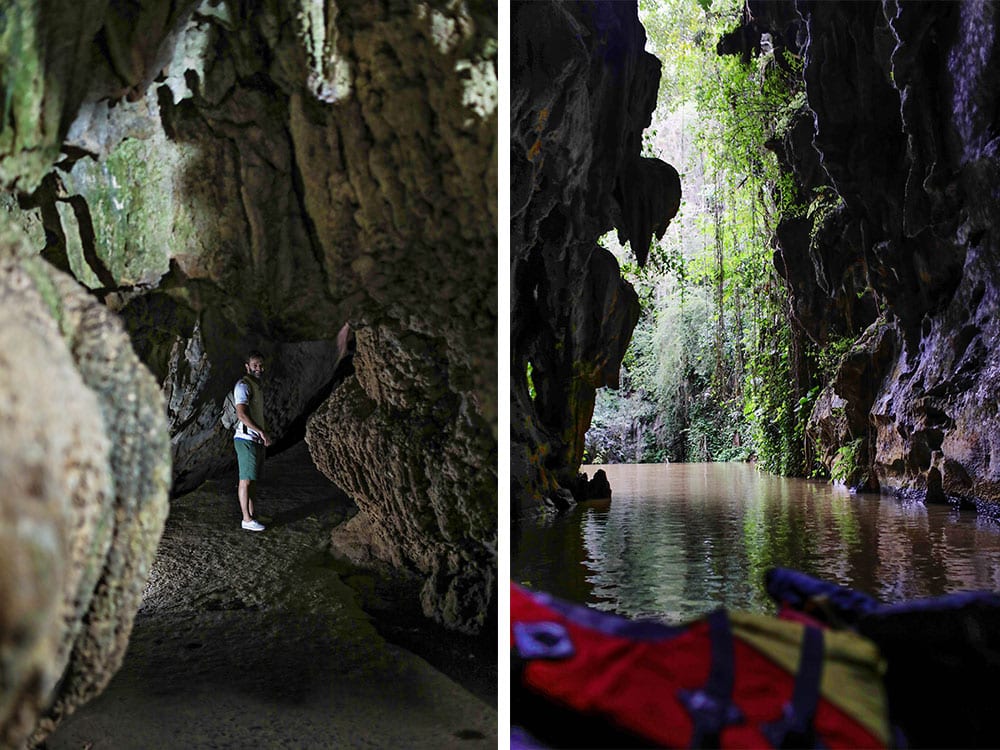
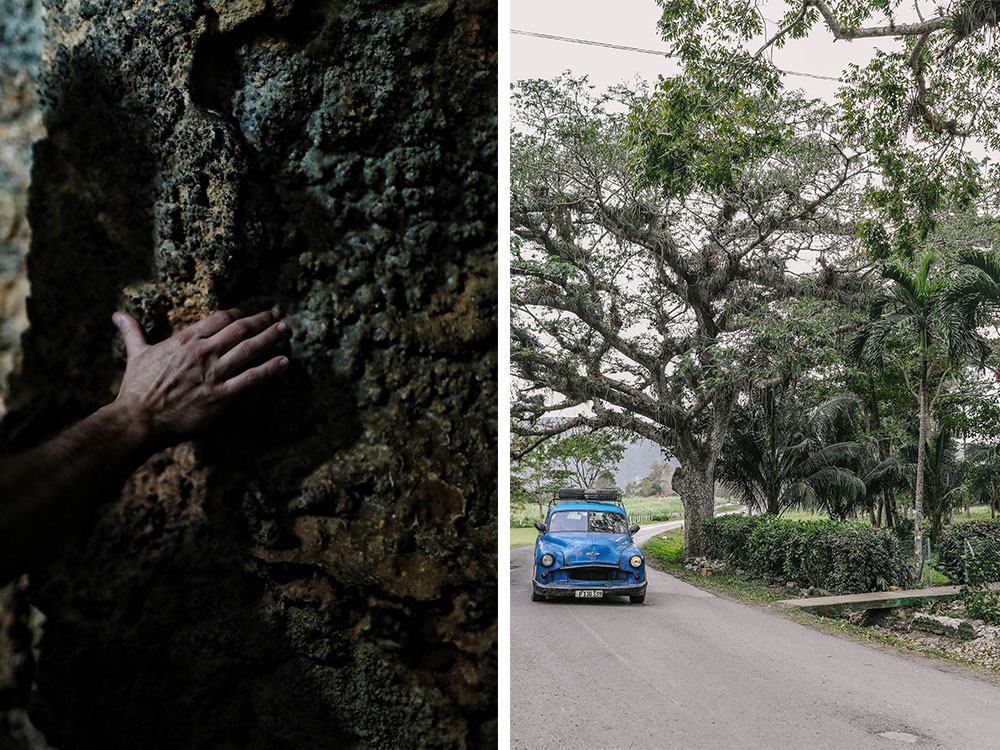
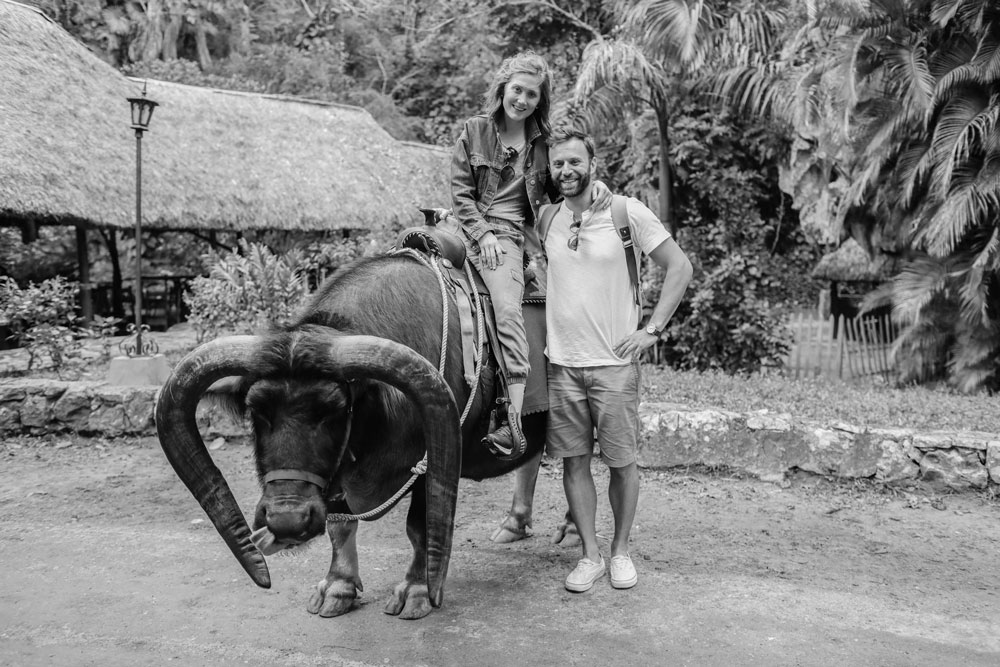
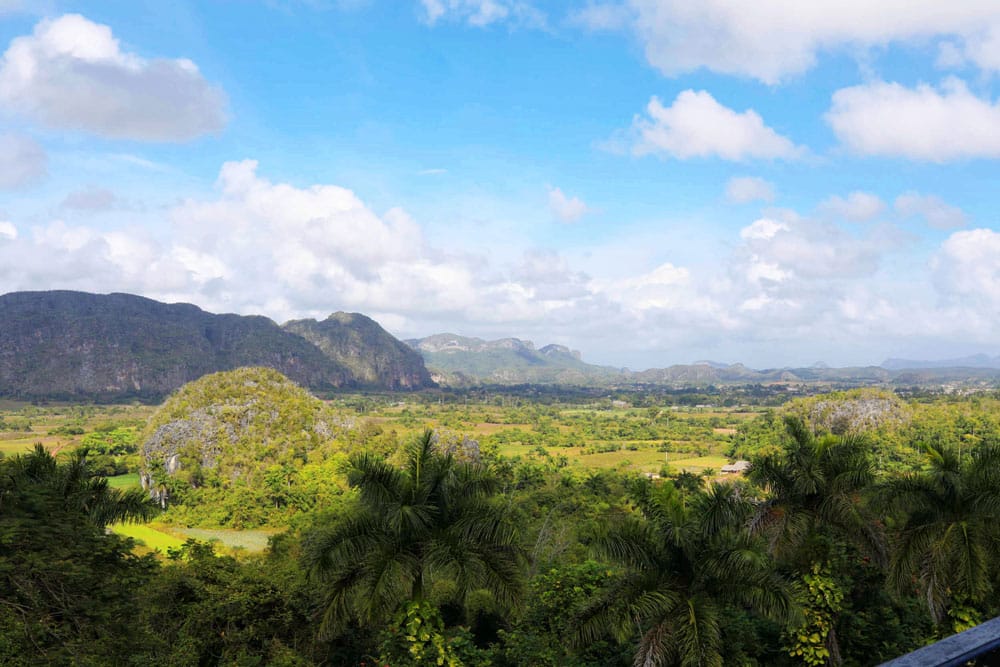 WHERE TO EAT
WHERE TO EAT
La Guarida – My top pick. It has a cosy atmosphere with soft lights, table linens, Cuban music and good jazz. The entrance is on a run-down street and is deceiving. The building, originally known as La Mansión Camagüey, shows its former magnificence from the wooden entrance door through the marble staircase up the two flights of stairs to the restaurant itself. It’s become a hot spot, so definitely make reservations.
304 O’Reilly – We loved this restaurant so much I we went twice. It’s a funky eatery with a good menu, great cocktails and a really cool vibe, albeit a bit Americanized.
Papa Ernesto – Located in Plaza Vieja, we were told this place had the ‘most beautiful’ hummus. It was definitely beautiful, and huge! We were also stunned when we ordered a hot dog, expecting a ball park sized dog, but were served a huge sausage sandwich. So come with an empty stomach!
Factoria Plaza Vieja – This is the micro brewery in Plaza Vieja. We didn’t go here, but when we walked by, this beer and food looked quite delish!
La Floridita – When I say that this place was always packed, I mean it! We probably walked by a dozen times and there were always people waiting outside. So if you get a table, lucky you!
Hotel Nacional de Cuba – Halfway through walking the entire city on the first day, we stopped here for a drink. We ordered a daiquiri and a Ron Collins (a Mohito without the mint leaves). It’s a little out of the way, but a cool place to see.
Santa Barbara Paladar – Right down the street from Hotel Nacional, it was a small restaurant with a good menu. It’s worth a stop if you’re in the area.
FOOD TO TRY
Pizza – We were really surprised at how many pizza joints we came across, especially on Calle Obispo. I would say more than pork or Cuban sandwiches. They’re personal pizzas, so not by the slice, and made with a different cheese.
Cafe Bombon – Coffee with sweetened condensed milk at the bottom. Very sweet and very good!
Bakeries – We stumbled into a bakery on our last day and split a GIANT piece of cake for just 1 CUC. The particular bakery was off of Obispo somewhere between Aguacate and Compestela. I’m not sure of it’s exact location by my point is, if you pass by a bakery, stop in! You won’t regret it.
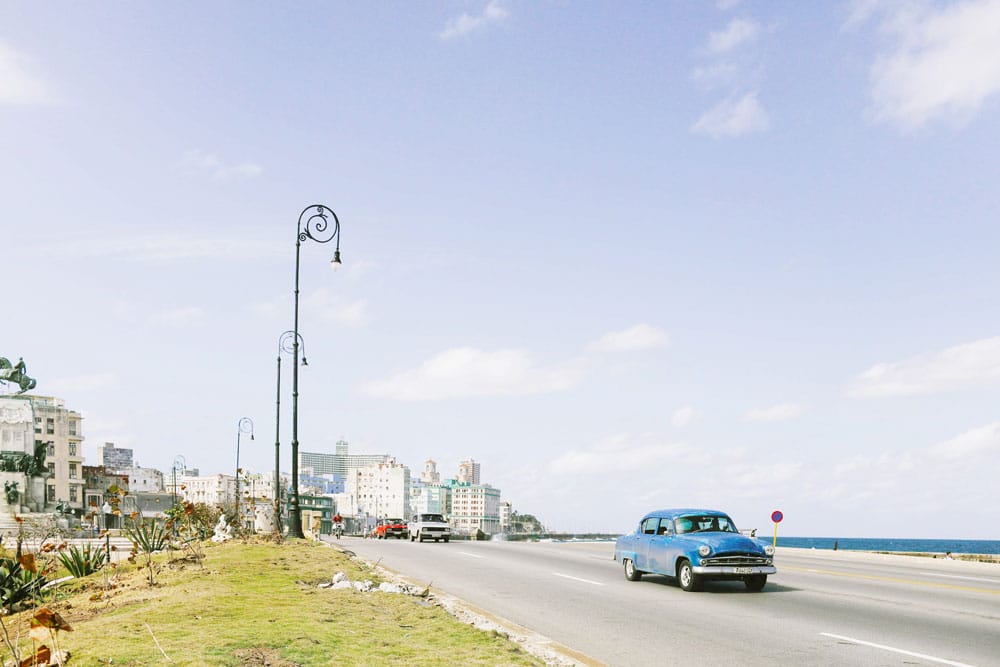
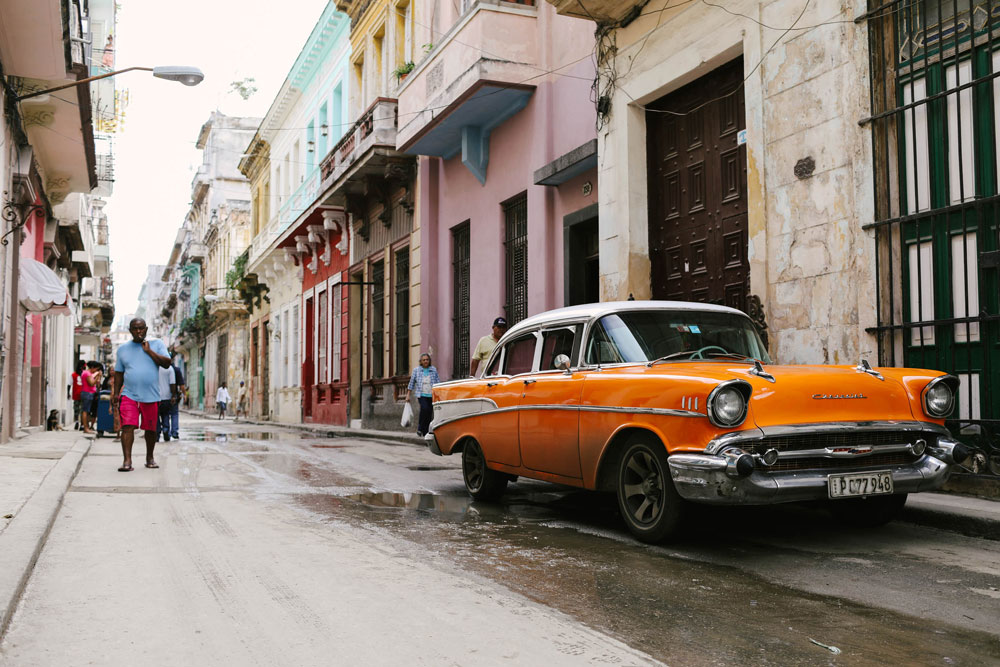 OTHER TIPS
OTHER TIPS
MARKETS – The definition of a market in the American sense (a place where you buy milk, snacks, chips, shampoo, cleaning supplies, etc.) doesn’t exist. The first morning, we went to a local bodega to get snacks and such and were surprised at the scarce assortment. No bottle water, no milk, no snacks. We were only able to get toothpaste and coffee. So bring snacks and food with you.
MEDICINE – Since Cuba is a socialist country, healthcare is free. Medicines aren’t sold at stores like that are in America. So bring any medicine with you (Advil, Tylenol, cough drops). When I got sick, I was lucky that Valentina had ibuprofen she could give me.
IF POSSIBLE, DON’T CHECK A BAG – The flight from Fort Lauderdale to Havana was 45 minutes and the time it took to get my bag from baggage claim was 2 hours. Get my drift?
CUBAN TIME – Cubans work on their own time. Many places said they’d open at 9AM, but that meant the employees got to the store at 9AM. We were told that our bus for the Vinales tour would leave at 7:30AM – it left close to 9AM.
DOWNLOAD SHOWS BEFOREHAND – If you’re staying in an AirBnB with no WiFi, you’re going to come back to a place with not much to do. You could smoke a cigar and watch the world go by, or you could read a book. You could also download shows/movies from Netflix or Amazon Prime before traveling.
WiFi – Internet/cellphones don’t work in Cuba. If your phone somehow connects, your next bill will probably be rather large. Actually, huge. If you want to make a call, you’ll have to connect to WiFi. We did at Hotel Sevilla. Even though we weren’t guests, we purchased a WiFi card for 2 CUC, which gave us an hour.
CLOSING THOUGHTS
Visiting Cuba was a true cultural experience. The architecture, the dilapidated streets, the crumbling buildings, the unique population, the old school cars, the socialist way of life – it was nothing I’ve ever seen before. A part of me was sad – behind the rubble, I could only imagine how beautiful the structures once were and such a shame that after years of having little to no raw materials to maintain, they were in bad shape. Now that people can travel to the country more easily, there’s hope. It’s a growing economy and a lot of the infrastructure hasn’t been able to keep up. Although this is primarily a sewing blog, I’m taking a departure from my normal posting to share my experience and my tips for getting there as I hope more people do.
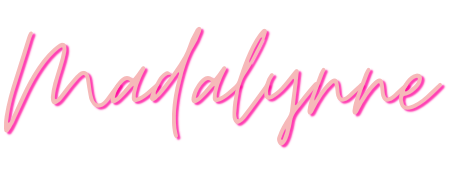
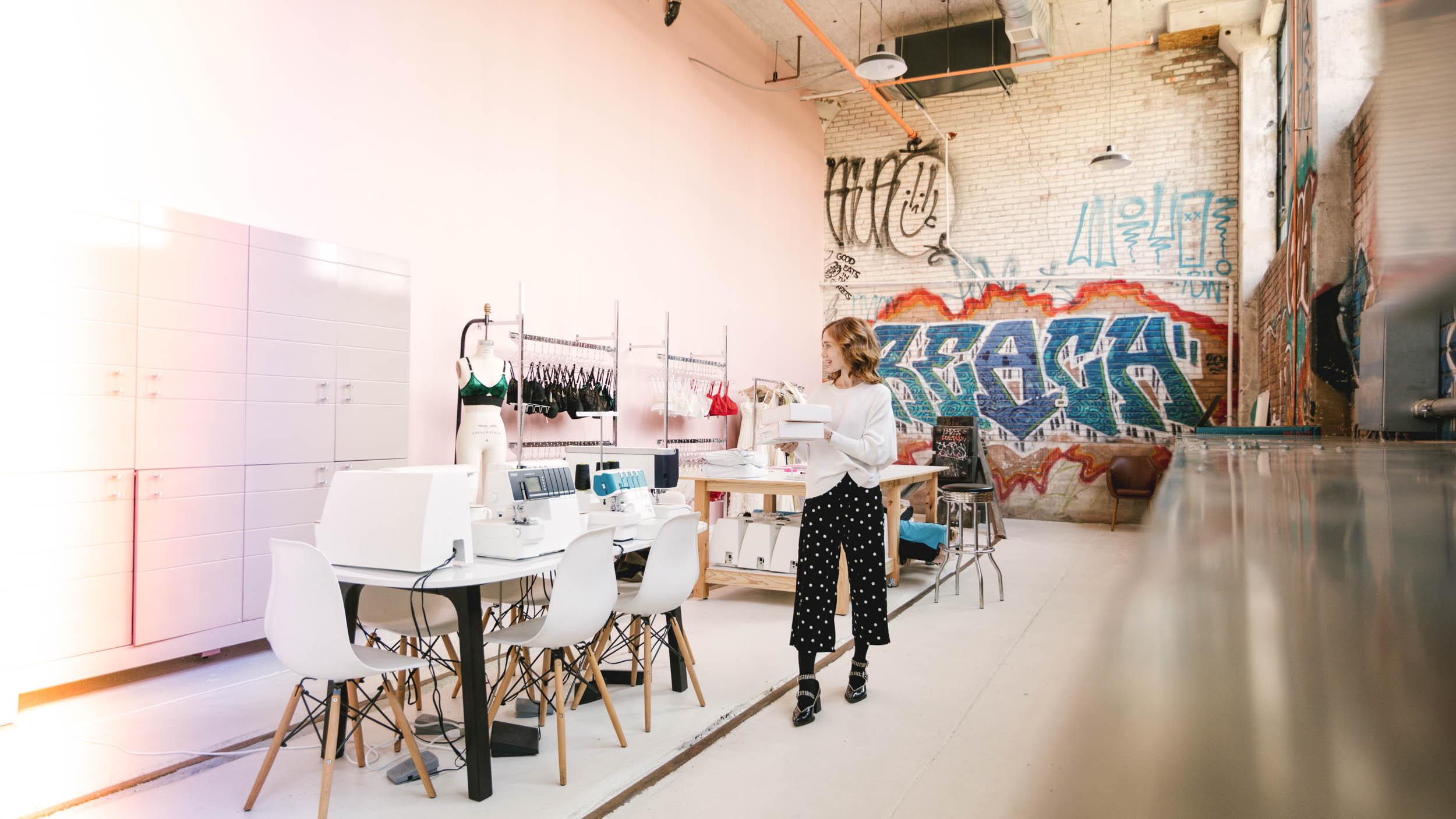
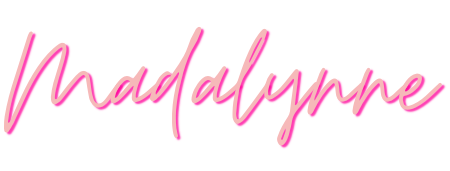

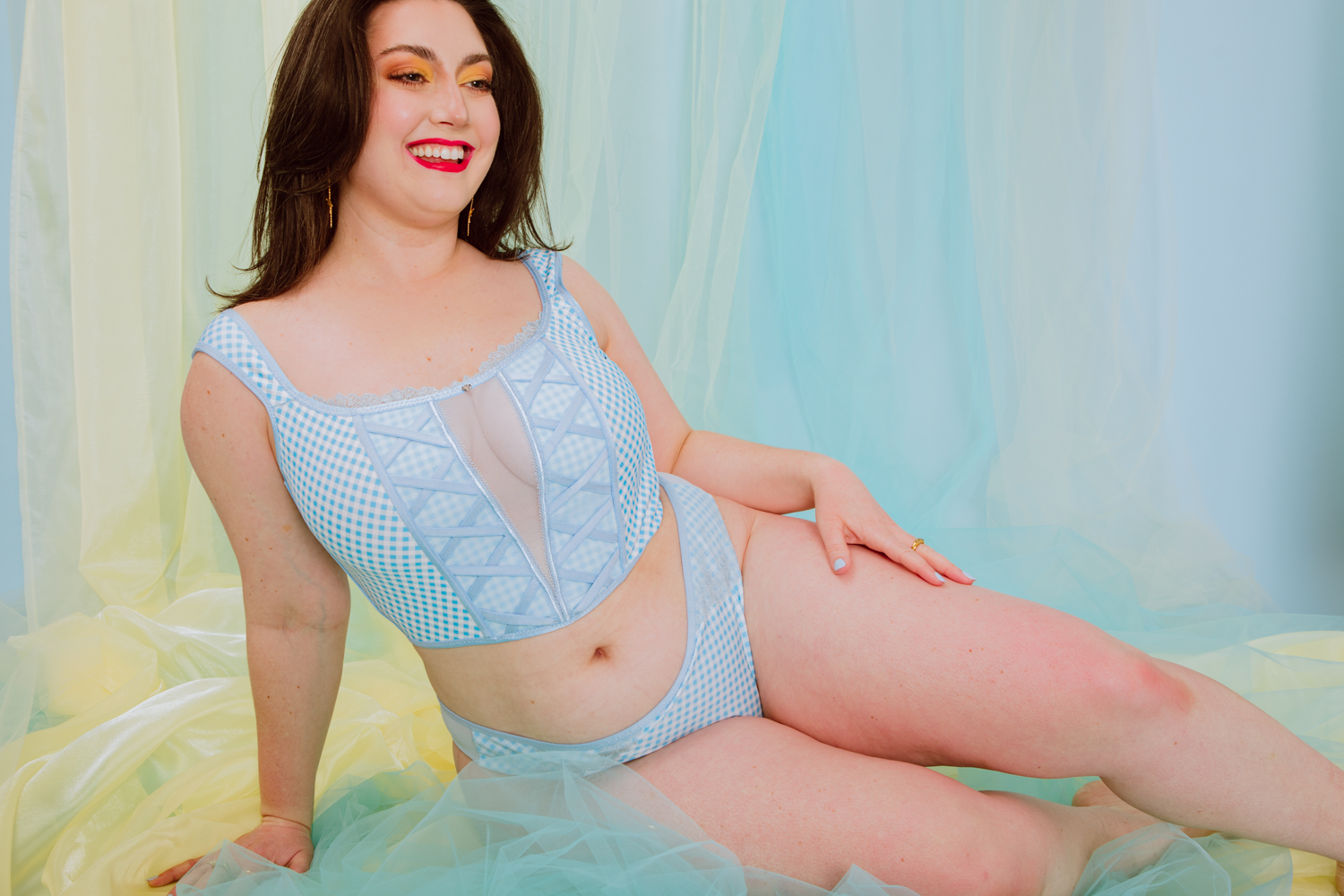
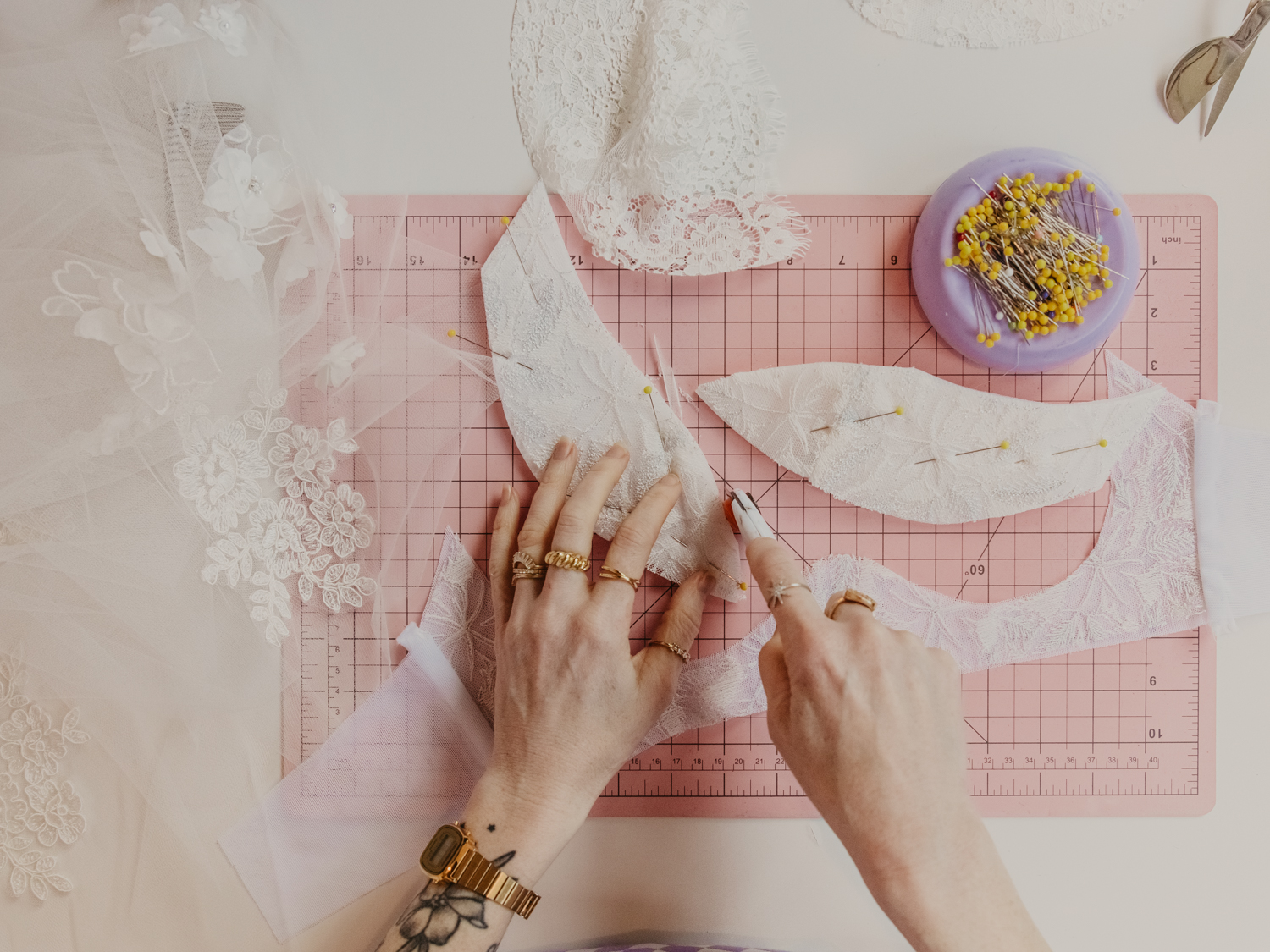

Jae
Your post makes me want to rethink visiting Cuba. I saw Southwest flew there but then read about the difficulties in planning travel with the new restrictions. I teach ESL and have a student from there. Would be such an amazing experience! Loved reading about your experiences.
Madalynne
We thought that with the new travel restrictions, it would be difficult for Americans to go. From what we heard from other American travelers, it’s still relatively easy and that the restrictions are kind of a scare tactic.
sewing princess
Thanks for this trip down memory lane. I traveled to Cuba over 10 years ago and drove around the island. As it was pre smart phones I feel the differences in terms of travelling around were not as shocking. When you travel there today…you just need to use a paper map and guide book…and approach it like an offline experience. I loved the people friendliness (luckily I’m fluent in Spanish) and opportunities to get to know a different part of the world. I wish I could go back some day.
Madalynne
We used a paper map as well! I hope you do get back there. I do. It was such an experience that I’ll never forget.
Jonathan
Let me throw my two cents in I’ve been traveling to Cuba for The Last 5 Years I always around 5 trips per year yes Cuba is laid-back it’s 50 years behind out of all the countries to visit Cuba is very unique and its own way just be ready to have a lot of patience and be very inconvenient and services and in food Choice remember they’ve had a blockade for 50 years Cuba is fairly safe but you can never let your guard down I read a lot of comments and they say Cuba is very inexpensive well it depends it can be expensive watch your money do a little research know how the currency works and like any other country you need to keep your guard up people will approach you in many ways you can talk to him you can be friendly but be smart and keep your guard up if you go to Cuba you will be in for a treat good luck hope you have a good time
Havana
Very acurate .Good and simple.
Only disagraments are:
– Cuba has many art schools ,not only one as you stated.
-Bodega is a place for Cubans to get rationed food and few other stuffs by assigned monthly qoutes and through a family ration card.Tourists are not supposed to buy anything there.
La Guarida ,O’Reilly 304 resataurants,Vinnales ,Varadero and Plaza Vieja among the best of Cuba.
Thanks for sharing it, we will also do it for our fb followers.
Mary
Sewing is the reason I read your blog but I really enjoyed this ‘tour of Cuba’. Makes me want to go. Thank you.
Maddie
You’re welcome!
Cláudia Lúcia Glicério
Eu também estive em Caio Coco, outra parte da ilha com praias também de areia branca finíssima e mar de um azul intenso. Desejo voltar lá.
Maddie
La próxima vez que vayamos a Cuba, definitivamente queremos explorar otras áreas de la isla.